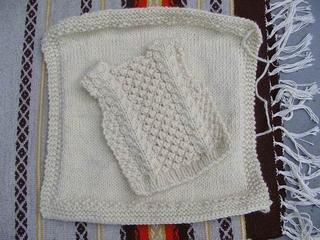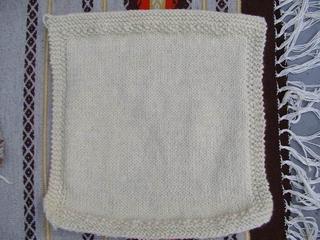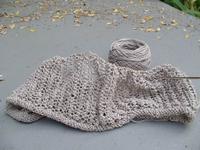Originally posted
November 12, 2002Handwork documentationWell, I got my roll of film back, so here goes. Eventually, I want to put up a separate page with my handwork projects, similar to
Wendy's, but ever so much more modest. But
Wendy is an inspiration and role model: she does beautiful work and she
finishes projects. (Please note that some of my documentation categories are similar to hers,
e.g.)
Oval Knitted Lace Table Cover Pattern
Pattern: Knitted Lace, Fluted Design with Eyelets
Pattern by: Mrs. Mae Young
Pattern Source: "Trimmings," in
PieceWork magazine, January/February 1996
Thread used: DMC Fil D'Écosse; Cébélia; 100% cotton; Size 10; Color Ecru
Where purchased: Thread--Mariposa, South Pasadena, California and Michael's, Pasadena, California; Satin smooth brocade cloth--
Velona Needlecraft, Anaheim Hills, California
Needles: Clover Takumi Bamboo double-pointed U.S. 1 (2.5mm)
Started: 1996?
Completed: November 2002
For whom: M
What I learned: How to block knitted lace from the instructions in
Second Book of Modern Lace Knitting by Marianne Kinzel and from
Judy Gibson's knitted lace blocking photos and instructions. (I also learned about Velona Needlecraft from
Judy Gibson's site.) From the helpful woman at the
Bearly Stitchin quilting supply store, I learned how to make patterns from freezer paper (available in grocery stores, e.g., Reynolds brand). You iron sheets of freezer paper together (iron on the non-plastic side) to make as large piece of paper as you need and then draw a template or pattern on the non-plastic side. You can then iron the pattern onto the back of the fabric (again, iron on the non-plastic side with the plastic side against the fabric), cut out the pattern, and then peel off the freezer paper.
The Bearly Stitchin woman also told me about foam-core poster board, which is available at art supply stores, and which can be used for blocking. I bought a 32" x 40" x 1/4" piece for $3 - $4, and it worked really well. I used a Sharpie water-proof marker (again, Judy Gibson's suggestion) to draw grid lines for blocking an oval shape. Because the board doesn't absorb water, the lace dries more quickly. The board is lightweight yet sturdy and, therefore, very easy to move from the floor to upright against a wall or from room to room. And it's very easy to reposition the pins multiple times as needed.
After I washed the knitted lace in cold water with Woolite, rinsed it, and then rolled it in a towel to absorb the excess water, I used T-pins to pin out the lace.

The next challenge was to figure out how to attach the lace to the satin material. Abbreviated version of a long story: the tailor at the dry cleaner I use sewed the piece together so that it is reversible. I was quite pleased with her work, although it's not perfect as the photo shows. However, the piece does look better in real life than in the photo and when it's properly ironed. Originally, I had wanted to complete the entire project myself, but after searching for ideas on how to put it together (the pattern is only for a piece of knitted edging, not for how to make it into something), I ended up having someone else finish it. Next time, I will look for a place that specializes in finishing handwork if something is too complicated for me to do well. I will also instruct them not to iron the knitted lace part.
Finally, here is the thank you note I received from M. On the one hand, I'm embarrassed because I know the gift isn't perfect; on the other hand, M writes such elegant notes.
How can I adequately express my deep appreciation and reverance for a gift of such consequence and intrinsic worth? I am awed by your thoughtfulness and the beauty and substance of your handwork. I will indeed treasure the beautiful lace and hold dear the kindness, talent, generosity of spirit, and good thoughts with which it was wrought. Thank you....














